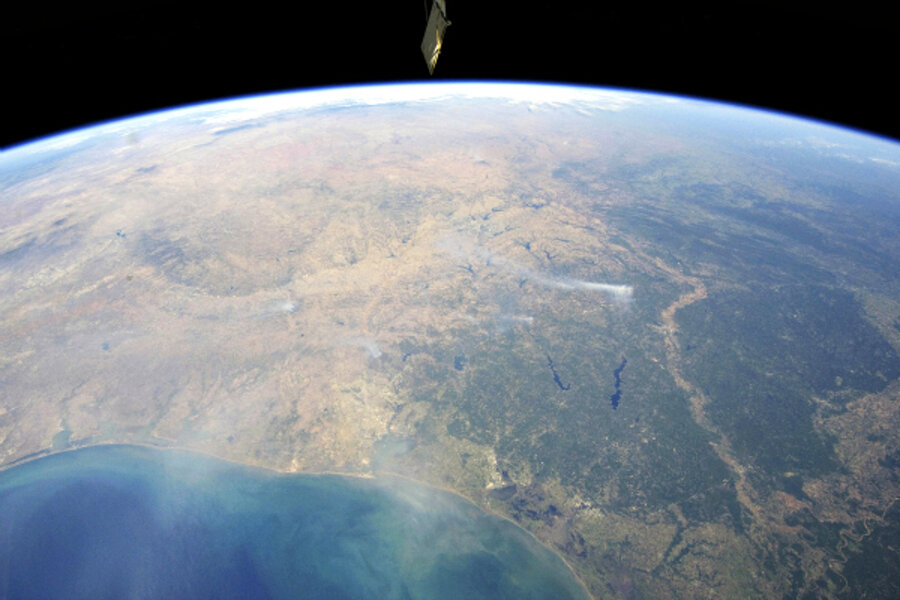The steady gain of humanity
Loading...
It’s easy to get caught up in the news of the day: a superstorm batters the US East Coast, a rancorous US election has Americans dreading the next attack ad on TV, a heartbreaking civil war in Syria seems endless.
Yet sometimes we need to pull back, maybe try to imagine the view astronauts see from orbit, and take in the big picture.
The Millennium Project does that each year with its “State of the Future” report, some 10,000 pages of data collected and synthesized from thousands of credible sources worldwide. Of course, its 2012 report represents only one take on things, and data is always subject to various interpretations.
RELATED: Six reasons to keep America as No. 1 superpower
The report, put out by this nonprofit, a global futures research think tank, doesn’t aim to dismiss or diminish the significant challenges humanity faces. But when trying to sum up the state of the world’s future, it has this to say:
“It is increasingly clear that the world has the resources to address its challenges.” And this: “[T]he world is getting richer, healthier, better educated, more peaceful, and better connected,” and people are living longer. The trend lines overall point in a positive direction: “[T]he 10-year future for the world is getting better.”
A few other highlights:
• By 2030, the middle class around the world is expected to grow by 66 percent, which is about 3 billion more new consumers with increased purchasing power and expectations. That’s a potential drain on world resources but also a tremendous opportunity for economic growth.
• Today’s worldwide life expectancy at birth is 68 years, which is projected to increase to 81 by 2100. (Life expectancy worldwide a century ago was little more than 30 years due to high infant mortality.)
• Some 85 percent of the world’s population will have a high-speed mobile Internet connection available to them by 2017.
• The number of people in extreme poverty (those living on $1.25 a day or less) fell from 1.94 billion (about half the world’s population) in 1981 to 1.29 billion (about 1 out of 5 people) in 2010, according to the World Bank.
• Over the past two decades, 30 percent fewer children under age 5 worldwide are dying.
• A large majority of people worldwide live in peace.
Food, water, and energy shortages, exacerbated by climate change, could lead to instability and violence and the forced migration of hundreds of millions of people in the future.
“Yet the probability of a more peaceful world is increasing,” the report says, “due to the growth of democracy, international trade, global news media, the Internet, NGOs, satellite surveillance, better access to resources, and the evolution of the UN and other international and regional organizations.”
In addition, the report notes ever-increasing demands for a higher ethical standard from those in power. New technologies, such as mobile phone cameras, are “exposing unethical decisions and corrupt practices.” Protests around the world, it says, show growing unwillingness to put up with unethical decisions by power elites.
The report includes actionable ideas for pushing reforms forward. In the absence of a worldwide consensus on how to address climate change, the world’s two biggest carbon polluters – the United States and China – could set their own bilateral “Apollo-like 10-year goal” to reduce emissions and research new solutions.
These two economic superpower-partner-rivals working in tandem – which would be to their mutual benefit – would soon pull the rest of the world along with them.
Ideas do change the world. Big-idea goals, such as landing on the moon, have been set – and met – before, goals that naysayers thought impossible. John Greenleaf Whittier, the 19th-century American poet, once wrote how “step by step ... we see the steady gain of man.”
No one doubts that the world needs an economic jump-start. But it also needs leaders (and citizens) with the vision to see beyond immediate problems and work on the big challenges by taking that kind of long-range “view from orbit.”
When that happens, people may find they see problems and opportunities from an energizing new perspective.







